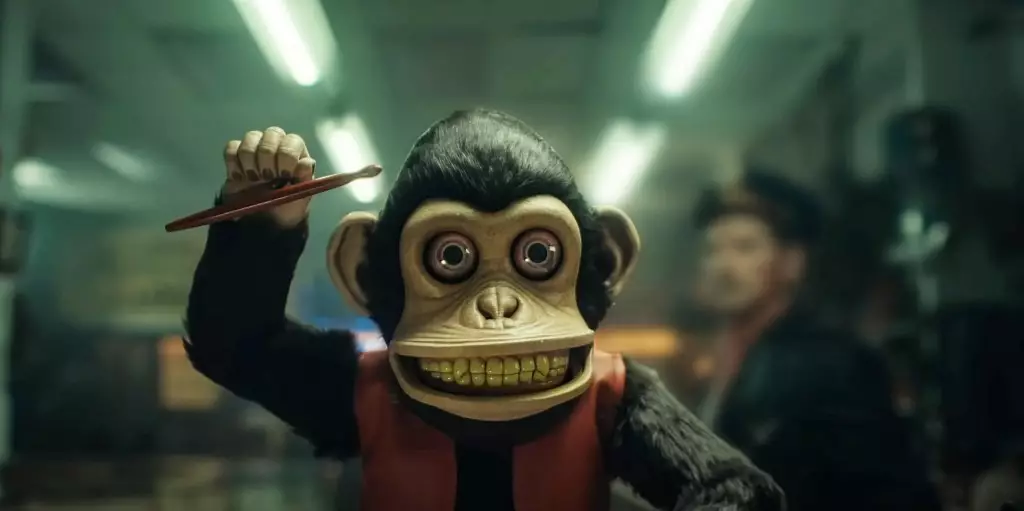In the ever-evolving landscape of horror films, Neon Film’s latest release, *The Monkey*, is making waves by projecting impressive box office numbers, with an estimated opening weekend of $12M to $14M following solid previews that raked in $1.9M. Directed by Oz Perkins, known for his previous hit *Longlegs*, *The Monkey* seems to be one of the standout entries in a competitive field of horror releases over the past month and a half.
Neon has proven its ability to carve a niche in the horror segment, particularly with Perkins’ prior work that opened to a handsome $22.4 million after earning $3 million in previews. The marketing strategy for *The Monkey* appears to deviate from conventional tactics typically associated with horror films, attempting a broad visibility campaign rather than a focused, mystery-laden one. This broader promotion, with large-scale installations such as eight-foot-sized monkey replicas in theaters, seems designed to attract attention and intrigue.
When comparing *The Monkey* with another recent release, New Line’s *Companion*, the statistics are enlightening. Despite *Companion* receiving critical acclaim and an audience-friendly vibe, its $9.3 million opening weekend was eclipsed by *The Monkey*. This comparison is significant in understanding how marketing and early audience engagement contribute to a film’s success.
While *The Monkey* garnered more extensive preview reactions — demonstrating an advance awareness that eclipsed that of *Longlegs* — it is noteworthy that its audience interest is slightly lower, indicating room for growth. The audience demographic favors ages 18-34, a promising sign for its appeal among younger viewers, a vital segment for horror films.
The promotional and advertising budget for *The Monkey* matched that of *Longlegs*, standing at approximately $10 million. This strategic financial allocation underscores Neon’s commitment to ensuring their films reach their potential audience. The early reviews reflect a strong positioning in critical circles, with an impressive 80% certified fresh score from critics and a 73% audience score on Rotten Tomatoes, showcasing the film’s ability to resonate well with its viewers.
It is important to contextualize these figures within the larger box office landscape, where existing franchises such as Disney/Marvel Studios’ *Captain America: Brave New World* and Lionsgate’s *The Unbreakable Boy* are also vying for viewer attention. *Captain America* continues to lead, having amassed over $113 million in its first week alone, demonstrating the strong competition *The Monkey* faces.
Neon’s success with *The Monkey* is further encouraged by the simultaneous recognition of their other feature film, *Anora*, which recently won accolades at the Cannes Film Festival and is nominated for Best Feature at the Film Independent Spirit Awards. Such momentum from prestigious recognitions may propel their cinematic reputation even further, potentially influencing Oscars campaigns later in the season.
The horror genre, often seen as a niche market, has fundamentally shifted to be an integral part of the cinematic experience. As emerging filmmakers like Perkins deliver fresh narratives with innovative storytelling techniques, viewers are beginning to gravitate towards these unique offerings.
As such, *The Monkey* stands as a testament to the evolving landscape of horror films. Its success could encourage more studios to invest in diverse horror narratives that deviate from formulaic plots while still catering to audience proclivities. This marks a promising era for independent films and horror aficionados alike, where both critical and commercial successes can thrive simultaneously.
With its robust opening and significant audience engagement, *The Monkey* not only potentially sets a benchmark for Neon Films but reaffirms the relevance of horror in contemporary cinema. The interplay between strong marketing strategies and audience appeal will shape future releases, marking an exciting chapter in the genre’s evolution.

